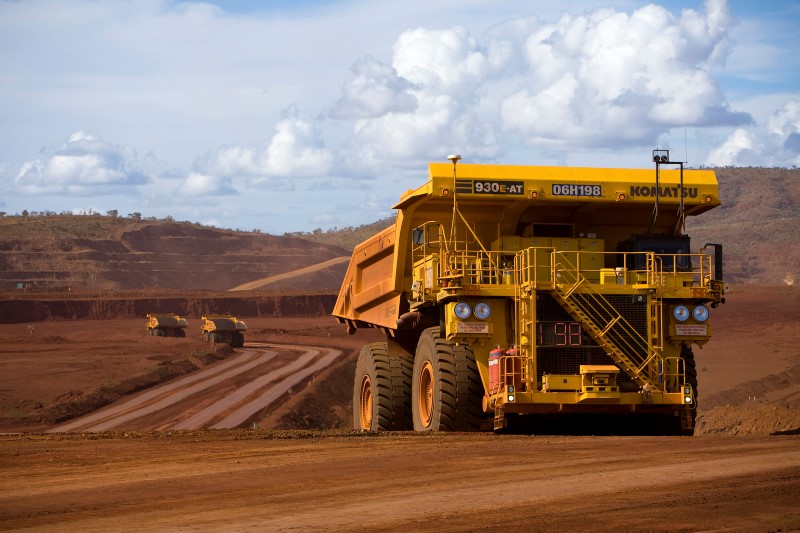(Repeats column published earlier with no changes to text)
By Clyde Russell
LAUNCESTON, Australia, Sept 21 (Reuters) - - If one was to compile a list of the biggest risk to metals and mining companies right now, it's unlikely that planning and executing a renewed growth strategy would the top issue.
But that's exactly the view of consultants Ernst & Young (EY), who recently produced a report highlighting the top risks for metals and mining companies in the next year, and how these have evolved since the peak of the commodity cycle in 2008.
There is obviously merit in the idea of thinking ahead and preparing for an upswing in commodity demand and prices, even if that recovery is nowhere to be seen presently and to many in the industry seems like it's not even on the horizon.
"Pro-cyclical, short-term behaviour currently prevails, with the collective industry mindset focused on consolidation and capital returns in a low-growth environment," EY said in the report.
"But standing still is not an option: we believe now is the time to prepare for a switch to growth."
There's very little to argue with in EY's reasoning, but it's also hard to imagine any board of directors in a metals or mining company putting expansion planning atop their to-do list.
Most companies are currently still in a siege mentality, battling low prices and muted demand growth for their products.
Take iron ore, for example, where even the lowest cost producers such as the Anglo-Australian pair of Rio Tinto (LONDON:RIO) RIO.AX and BHP Billiton (LONDON:BLT) BHP.AX are very much focused on cutting costs and driving productivity.
In their recent investor presentations after reporting steep declines in profits, both companies talked a lot about what they were doing to run their businesses at maximum efficiency, and very little about what their future expansion plans were.
In some ways, the EY report is on the money, as it's always a good idea to buy assets when they are distressed and when the price cycle for the commodities they produce is near the bottom.
But very few companies will find themselves in a position where their balance sheet is strong enough to fund major acquisitions, even assuming their shareholders had the appetite to support ambitious growth plans.
Perhaps large entities with the backing of governments with deep pockets, such as China's state-owned enterprises, could consider takeovers or costly new projects, but even they seem more focused on managing the transition of the world's second-largest economy to a more consumer-driven model.
The difficulty of developing new mines is also shown by the travails of India's Adani ADEL.NS in getting its $16 billion Carmichael coal mine in Australia's Queensland state started.
The project has been repeatedly delayed by court actions by environmentalists, difficulties in obtaining finance and continuing concern over the economics of the project, so much so that Adani recently halted engineering work.
The difficulties of doing major acquisitions or new projects shouldn't mean companies should abandon all growth opportunities, but a more realistic assessment of the current situation is that most mining and metals companies will be more modest in ambition, perhaps seeking joint ventures as a way to grow without much capital input.
CHALLENGES CAN BE OVERCOME
If growth is the top risk, what else does EY have on its list?
Number two is productivity improvement, followed by access to capital, and these speak more to the present situation of trying to survive in a market where most commodities are priced at multi-year lows.
Rounding out the top five are resource nationalism and social licence to operate.
Resource nationalism tends to be more of an issue in developing countries, as can be seen by Indonesia's policies to ensure local ownership shares in coal mines and the restriction on the export of raw ores.
The social licence to operate is more of an issue in developed nations such as Australia and Canada, where environmentalists are often able to forge partnerships with rural or indigenous groups to challenge the development or expansion of mines.
Comparing EY's business risks for today with those at the height of the commodities boom in 2008 shows social licence was the only common one in the top five.
The number one risk in 2008 was skills shortage, followed by industry consolidation and access to infrastructure.
It seems the mining and metals industry was largely successful in dealing with the skills issue, albeit at the cost of skyrocketing wages, which are now trending down as companies cut projects and strive for efficiencies.
Industry consolidation was perhaps less successful, with several prominent acquisitions not delivering shareholder value, a good example being Rio Tinto's $3.9 billion purchase of Mozambican coal assets, which were later written off and sold for $50 million.
Access to infrastructure is another issue that appears to have been largely successfully dealt with, although again at massive expense given the cost of building new mines, railways and ports or expanding existing facilities.
A common element is that the challenges of 2008 were solved by investment, perhaps over-investment in certain cases.
The challenges of 2015 are more likely to be met by innovation and strategic nous, as the industry can no longer rely on the promise of an extended commodity super-cycle.
(Editing by Tom Hogue)
